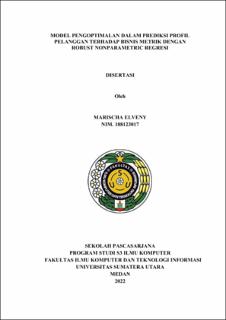| dc.description.abstract | Business intelligence can be defined as a set of techniques and tools for the acquisition and transformation of raw data into meaningful and useful information for business analysis purposes. Information requires strategies and programs that cannot be ignored by competitive organizations where e-metrics plays a role. Electronic-Metrics or commonly called e-metrics is data created based on electronic-based customer behavior (e-customer behavior). Running a business is certainly related to the customer. Every customer has data, the existence of this data has a function that can make a step in determining policy. With a data able to identify various cross-selling a customer. It becomes important to understand the various parameters by which to separate categories of existing customers. Such as the type of product or service they buy, frequency of purchase, geographic location of customers and so on. The purpose of optimizing the customer profile is to find the minimum or maximum value of a problem in a business, reading opportunities by predicting customer needs. This gives them the power to extract, compile and analyze customer data, allowing for new opportunities in industries that were previously difficult to market. In this study, MARS was used to explain the relationship between response variables and predictor variables which aimed to find the pattern of relationships between variables, there were 9 predictor variables used. Robust looks for outliers that occur in the data pattern from MARS. Based on the prediction results, it was developed again with a new model generated from mathematical functions. The model is validated using the Confusion Matrix by measuring the performance of its classification. The results achieved based on optimized customer profile predictions explain that improvements in time management (periods), for example the length of merchant opening time, the existence of discounts at certain times, have a large impact on a business. Meanwhile, the distance between customers and merchants is also very influential, where customers prefer to look for merchants that are closer, due to the effectiveness in terms of time and costs incurred for transportation. | en_US |




